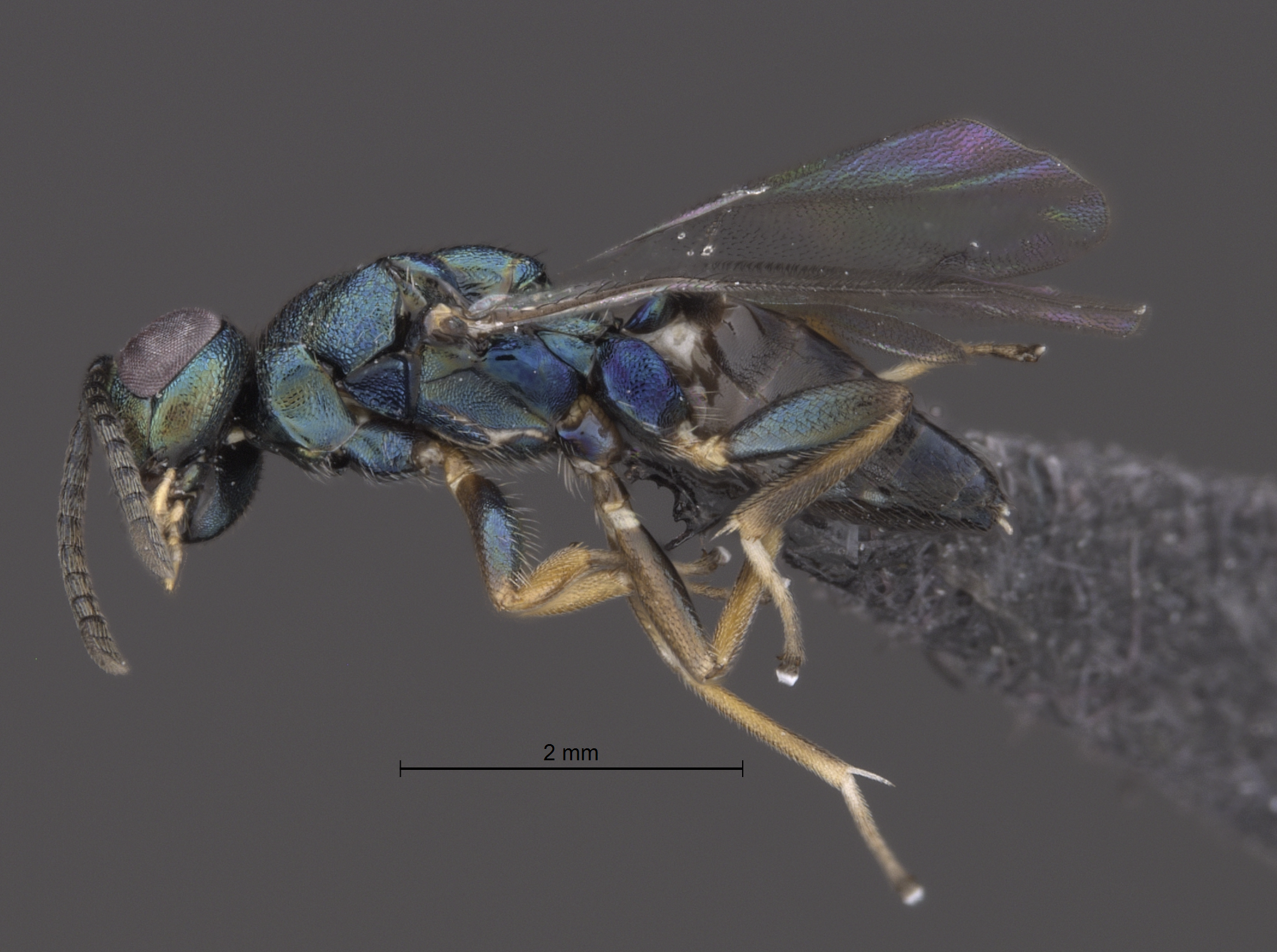A genetic catalogue of the insect pests found on wild and cultivated olive tree species in South Africa is being compiled by a small team of geneticists in the Faculty of AgriSciences at Stellenbosch University (SU) and their South African and overseas collaborators. The team has completed their efforts on olive flies and wasps, and now also hope to extend their work to olive lace bugs and flea beetles.
The work is being led by Dr Barbara van Asch of the Department of Genetics in the Faculty of AgriSciences at Stellenbosch University. It is linked to research projects she was involved in at the University of Porto in Portugal, before moving to South Africa and Stellenbosch University in 2015.
“Knowing which insect species there are, and how to definitively identify one from another is of value to both the agricultural and environmental sectors," says Dr van Asch. “It helps the industry keep tabs on the introduction of potentially harmful or invasive species into local orchards."
To identify insect species purely on specific visual cues generally requires great skill and the dedication of a specialised taxonomist. In recent years, this process has been made easier thanks to molecular and genetic research tools which allow researchers to distinguish between different species based on each one's definitive DNA barcodes.
“We no longer need to wait until a suspect insect reaches adulthood before making a positive identification but can already do so using the DNA contained in its eggs or larvae," she explains. “This is noteworthy, as it means that control measures for a particular area could be put into place if need be sooner rather than later."
Commercial olive farming in South Africa started in 1925 with the establishment of the first orchard in the Paarl region.
According to Dr van Asch, South African commercial olive farmers have so far been lucky because their trees do not suffer the same level of insect infestation as that experienced in olive producing areas of the Mediterranean and California.
Wild and cultivated olives often harbour and often share a diversity of insects, which is particularly rich in the Western Cape compared to all other world regions. Some are considered agricultural pests, such as the olive fruit fly. In South Africa, wild olives tend to have higher infestation rates of seed wasps, parasitoids and olive fruit fly species than cultivated olives.
Dr van Asch hopes to receive further funding from industry or funding agencies to be able to extend the work being done in her laboratory to other olive tree pest species of importance, such as olive lace bugs and flea beetles. These species also cause damage to cultivated olives but have been poorly studied as an agricultural pest.
Wasps associated with olives
Her team recently published journal articles highlighting their efforts.
An MSc student in the SU Department of Genetics, Chante Powell, was the lead author of a paper published in Genome on the ten types of wasp species known to be found around wild and cultivated olive trees in the Western and Eastern Cape. It is the first comprehensive study of olive wasp species in the region since the advent of molecular studies.
The paper not only contains extreme close-up photographs (taken at the Iziko Museum in Cape Town) of the four species of Braconidae and six species of Chalcidoidea, but also their detailed DNA barcodes and information about how the species relate to each other.
The work was done in collaboration with researchers from the University of Palermo and University of Naples in Italy, the Iziko South African Museum and the Agricultural Research Council of South Africa.
For the purposes of her study, Powell picked more than 83 000 olive fruits off wild and cultivated trees in 16 regions of the Western Cape and one in the Eastern Cape. She then waited for the larvae to hatch and the wasps to reach adulthood to be able to identify and barcode each species.
She found that wild olives seem to suffer more from seed infestation and parasitism by for example Eupelmus spermophilus and Utetes africanus wasps than cultivated olives.
“This is probably because the insects have co-evolved with the wild olive over a long time in this region before the recent arrival of the cultivated olive," she explains.
Some wasp species develop inside the seeds themselves (and are called seed wasps), while others lay their eggs within the olive fruit. Other wasps are so-called hyperparasitoids, in that they lay their eggs within the developing larvae of other wasp species.
“We are not yet sure which wasps are parasitoid, hyperparasitoids or seed wasps," explains Dr van Asch. “Further research is needed in this regard."
The study of the wasps associated with olive trees is of value, as it might serve as a way to control the infestation of olive fruit flies that can be a pest."
Studies on olive fruit flies
The Stellenbosch University research group of Dr van Asch also collaborated with Dr Luis Teixeira da Costa of the Oslo University Hospital in Norway, lead author of a genetic study in the International Journal of Biological Macromolecules about the African olive fruit fly (Bactrocera biguttula). This olive fly is endemic to sub-Saharan Africa. It does not attack cultivated olives but rather develops in the fruits of wild olive species.
The paper compares the genetics of the African olive fruit fly with that of a widespread sister species, Bactrocera oleae. This agricultural pest attacks both cultivated and wild olives. The two species of olive fruit flies were found to share a common ancestor more than 10 million years ago.
For media enquiries (please do not publish):
Dr Barbara van Asch
Department of Genetics, Faculty of AgriSciences, Stellenbosch University
bva@sun.ac.za
+ 27 21 808 5888
References:
Powell, C. et al (2018). Barcoding of parasitoid wasps (Braconidae and Chalcidoidea) associated with wild and cultivated olives in the Western Cape of South Africa, Genome 62(3):183-199. doi: 10.1139/gen-2018-0068.
Teixeira da Costa, L. et al (2019). The complete mitochondrial genome of Bactrocera biguttula (Bezzi) (Diptera: Tephritidae) and phylogenetic relationships with other Dacini, International Journal of Biological Macromolecules, 126:130-140. doi: 10.1016/j.ijbiomac.2018.12.186.
- Main photo: Researcher Dr Barbara van Asch of the Department of Genetics at Stellenbosch University, with one of her postgraduate students, Chante Powell, who is conducting studies on olive pests. Photo: Supplied
- Photo 1: Eupelmus spermophilus, a known olive seed wasp. Photographer: Chante Powell

